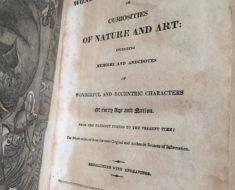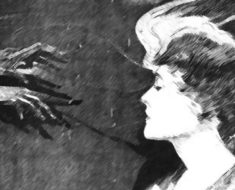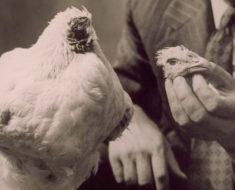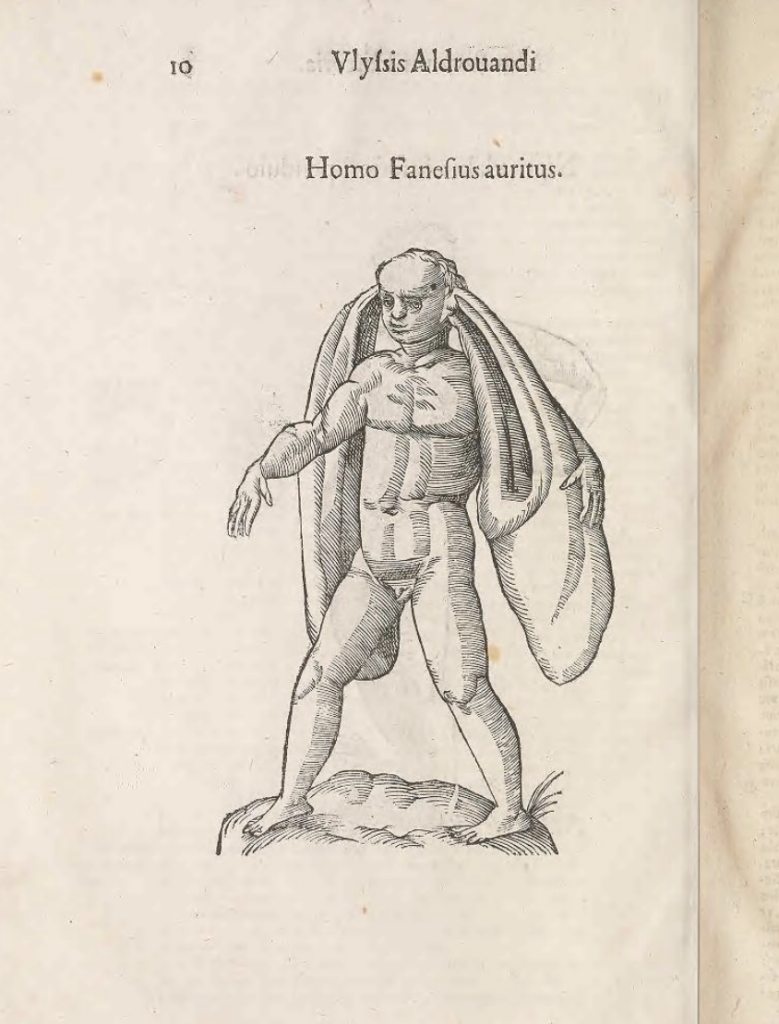
The Panotti, from Vlyssis Aldrovandi’s book, Monstrorum Historia, 1642.
This creature, which looks part human, part elephant, part basset hound, is called the Panotti. They were a mythical race of people whose ears were so large they served as clothing, and at night, a fleshy blanket.
Pliny the Elder, the Roman historian, wrote about them and other strange creatures sometime between 77-79 AD in his encyclopedia series, Natural History. The volumes included both real and not-so-real information. The Panotti, presumably intended as part of the latter form of book entries, were said to live off of Scythia, on the “All Ears Islands” and were informed by the writings of Greek historian, Herodotus in the 5th century BC.
Perhaps the Panotti’s warm ears helped them survive for the next 1400 years, because they reappear on world maps, including one drawn by Henricus Martellus in 1491. They’re shown living in southern Asia.
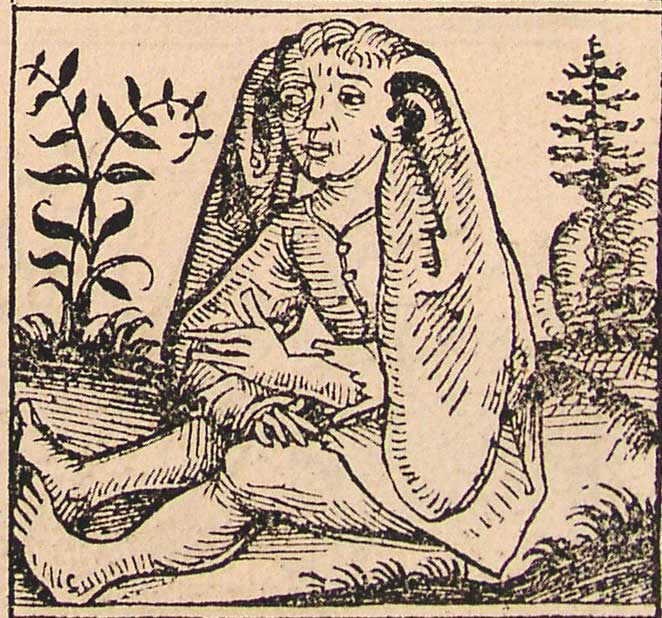
A woodcut of the Panotti from the Nuremberg Chronicles.
Two years later the Panotti showed up again in Hartmann Schedel’s Nuremberg Chronicles, which covers human history beginning with the biblical creation of the world and includes myths and legends passed down over the ages, illustrated with hundreds of woodcuts. Schedel was a doctor and book collector with more than a thousand volumes in his collection to aid his writing. The book was originally printed in Latin, and was later published in German as well.
In 1642, Vlyssis Aldrovandi included the big-eared beings in his wondrous book, Monstrorum Historia. Like Pliny, his work was an encyclopedia of natural history. The first portion, in which he’s presented, includes a variety of curious humans and mythical creatures—many of which are far more bizarre than the Panotti.

